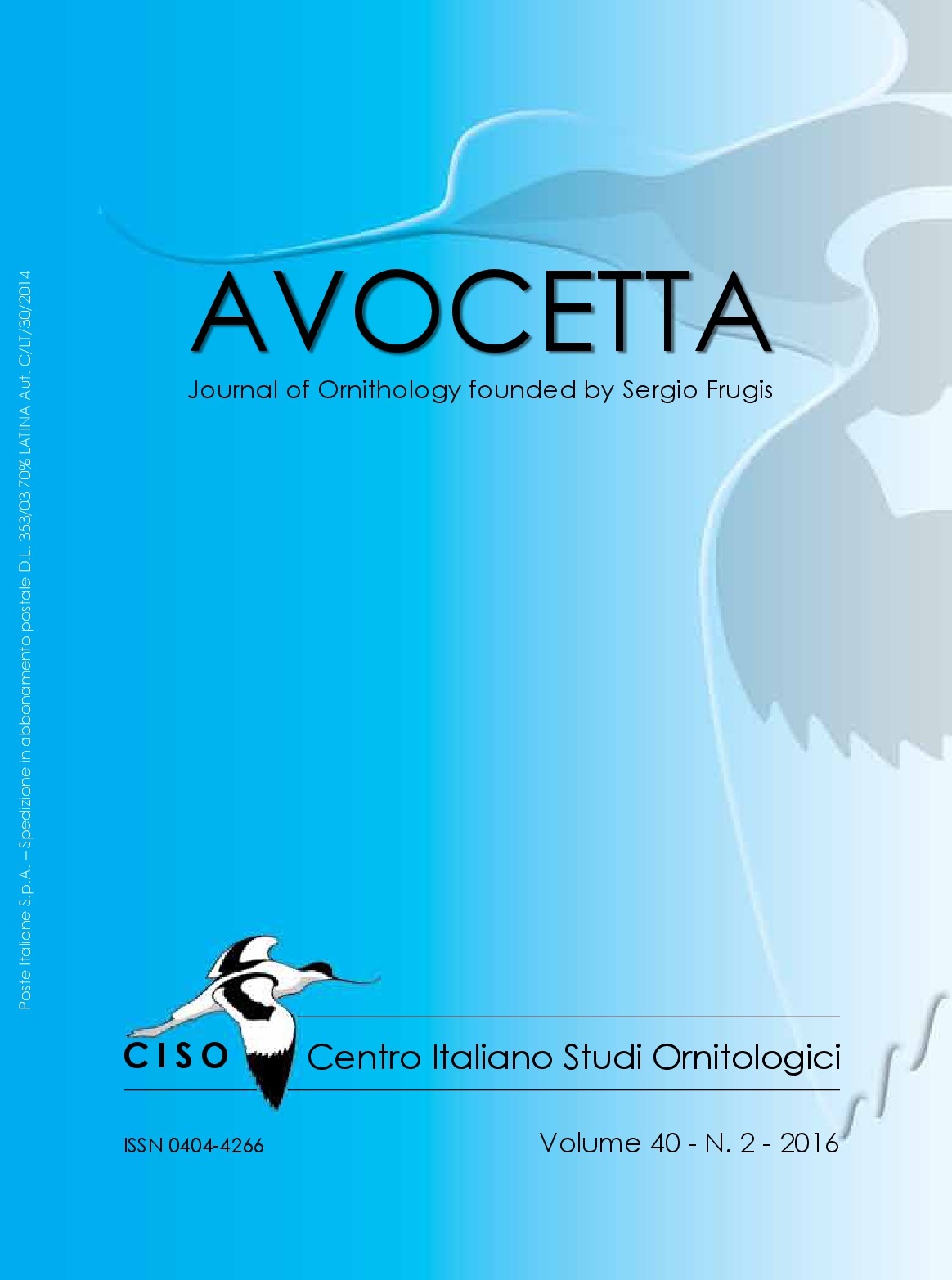
Volume 40 - N. 2
December 2016
Avocetta
Volume 40 - N. 2
-
Measuring bird abundance: a comparison of methodologies between capture/recapture and audio-visual surveys
Basile M., Balestrieri R., Posillico M., Mancinelli A., Altea T., Matteucci G.
-
Breeding habitat selection of the Black Woodpecker Dryocopus martius L. in Mediterranean forests
De Rosa D., Andriuzzi W.S., Di Febbraro M.
-
First breeding colony of Audouin’s gull Larus audouinnii in Sicily, characteristics and its origin
Ientile R., Linares A., Brogna F.
-
How to get by in a floodplain forest: the reaction to forestry as evidence by the Tawny owl Strix aluco
Czocherová I., Baláz M., Turcoková L.
-
New colony of Little Egrets Egretta garzetta at Trapani saltpans
Surdo S.
-
Colonization of Eurasian Jay Garrulus glandarius and Holm Oaks Quercus ilex: the establishment of ecological interactions in urban areas
La Mantia T., da Silveira Bueno R.
-
Expansion of the breeding range and probable high-altitude nesting of the European Nightjar Caprimulgus europaeus in the Carnic Alps (North-eastern Italy)
Rassati G.
- Italian review of Doctoral Theses in Ornithology (second edition)
- Columns - Book Reviews

